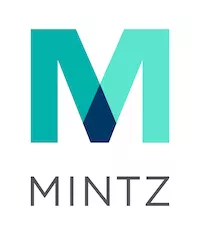- with readers working within the Accounting & Consultancy industries
By now, businesses operating in the over-the-counter (OTC) drug product space should all be familiar with the changes made by Congress to the regulatory system with the final OTC Monograph reform bill, which was included as part of the Coronavirus Aid, Relief, and Economic Security Act that was signed on March 27, 2020 (see our prior posts here and here).
As we've reported previously, at the end of 2020, the Office of Non-Prescription Drugs (ONP) of the Food and Drug Administration (FDA), launched a webpage for its brand new user Over-The-Counter Monograph User Fee Program (OMUFA) - available here - published programmatic fee rates for Fiscal 2021 (which ended on September 30, 2021), and subsequently posted a public arrears list of facilities that did not make their FY2021 facility payments as was required to be done by May 10, 2021. Drugs produced by those in-arrears facilities are considered misbranded under the law.
As an aside, the FY2022 OMUFA fee rates have not been published in the Federal Register as of the date of the blog post. However, ONP director Theresa Michele recently commented at an industry conference that facility fees for FY2022 will not be due until June 1, 2022, so companies will not have to pay two fees in a single calendar year.
Separate from standing up the OMUFA Program and educating OTC drug manufacturing facilities about their new annual facility fee obligations and the fees and administrative processes associated with submitting an OTC Monograph Order Request to FDA, the agency has been working diligently to convert historical OTC monographs into "deemed" final administrative orders as required by the reform law. As with the old system of OTC monographs, final administrative orders provide a baseline of conditions that are generally recognized as safe and effective, or "GRASE," for each OTC therapeutic category. Although by operation of law, the conversion of final monographs and tentative final monographs into administrative orders occurred on the date of the law's signing, the agency is re-creating and re-publishing these important documents in their modernized format to further aid industry and other stakeholders in easily finding the information that they need. At the beginning of FY2022, FDA also published its first non-binding annual forecast of planned monograph activities, available for review here.
Accordingly, part of the ongoing modernization process included the creation of a new online database for interim, proposed, and final administrative orders, which FDA rolled out recently and can be accessed at OTC [email protected]. Interested parties can submit comments on agency proposals to add, remove, or change the GRASE conditions of certain monographs directly through this webpage. The agency has also indicated that it will be withdrawing the regulations for final monographs from Title 21 of the Code of Federal Regulations at a later date, once all the relevant deemed final orders have been prepared and published on the site.
To date, the agency has posted several Final Administrative Orders that were deemed as such by the reform law on the OTC [email protected] database, along with one proposal that is currently subject to a public comment period (ending November 12, 2021). The proposal relates to sunscreen products and includes several fairly significant changes, such as new labeling requirements for sunscreens and a substantial reduction in the number of active ingredients that are considered GRASE, such that they can be marketed without a specific OTC drug approval from FDA. Among some of the sunscreen regulatory proposals on which FDA is seeking input are:
- Adding more information to the main part of the sunscreen label, including an alphabetical list of the active ingredients, followed by the dosage form (such as lotion or spray);
- A requirement for sunscreen products that have not been shown to help prevent skin cancer or early skin aging to include an asterisk on the principal display panel directing consumers to a "Skin Cancer/Skin Aging Alert" on another part of the product label;
- A requirement that all sunscreens with SPF values of 15 and above provide broad spectrum sun protection at a specific ratio, based on growing evidence of significant harms associated with ultraviolet A (UVA) exposure;
- New record-keeping requirements for manufacturers of sunscreen, such as final formulation testing records;
- Determining that sunscreen-insect repellent combination products are not GRASE;
- Determining that oils, lotions, creams, gels, butters, pastes, ointments, and sticks are safe and effective dosage forms for sunscreen products, while sprays are GRASE subject to specific testing and labeling requirements, and not enough information is yet available to make a decision about the GRASE status of powder sunscreens; and
- Limiting the current GRASE sunscreen ingredients to zinc oxide and titanium dioxide.
The agency is proposing that sunscreens with aminobenzoic acid (PABA) and trolamine salicylate would not be given GRASE status because safety data evaluated for those two ingredients demonstrates that the risks outweigh the benefits for such products, although they are no longer highly used ingredients in the marketplace. In addition, FDA is requesting more data on several active drug ingredients for sunscreen uses - including, but not limited to, octinoxate, octisalate, oxybenzone, and avobenzone - in order to support a potential GRASE determination for those ingredients. In the absence of the submission of additional data to show that each of those ingredients is safe and effective for their intended uses, or at least evidence that a manufacturer is diligently conducting the necessary studies to support safety and effectiveness findings for specific active ingredients, FDA is prepared to rule that they are not GRASE. It would therefore be unlawful to market such an ingredient in an OTC sunscreen product.
Stakeholders who may be affected by any or all of these sunscreen regulatory changes should review the detailed proposed order from FDA and submit comments or additional information by the November 12 deadline. And you may want to bookmark the new OTC Monograph database for easy access as older resources are retired, and as we enter an exciting new era of OTC drug regulation!
The content of this article is intended to provide a general guide to the subject matter. Specialist advice should be sought about your specific circumstances.


